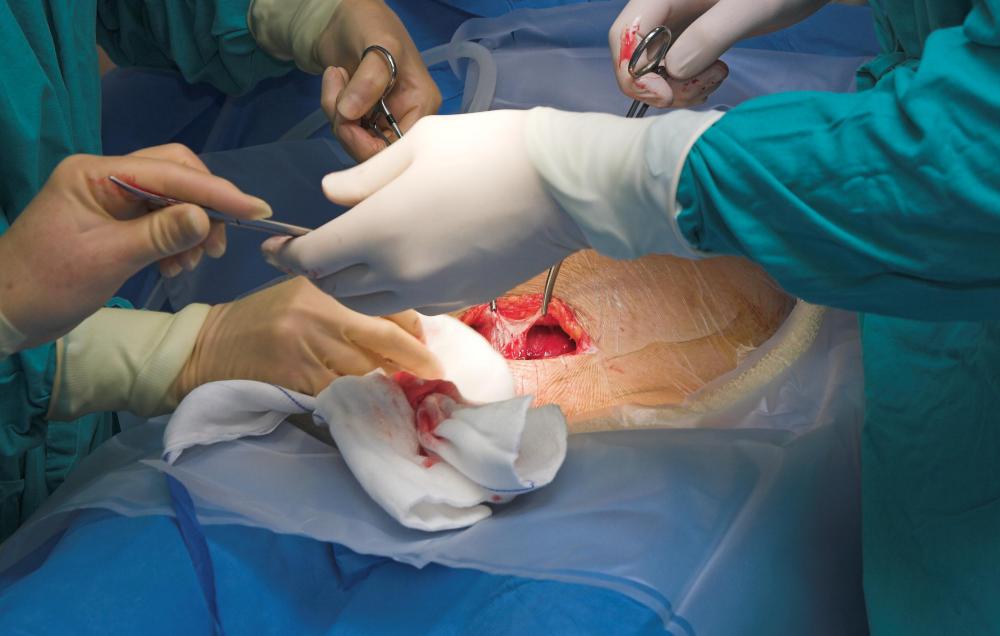At WiseGEEK, we're committed to delivering accurate, trustworthy information. Our expert-authored content is rigorously fact-checked and sourced from credible authorities. Discover how we uphold the highest standards in providing you with reliable knowledge.
What is a Meningocele?
Meningocele is a form of spina bifida, a relatively common birth defect. This congenital condition affects the meninges, or the membranes surrounding the spinal cord. There is an abnormal opening in the back through which the meninges bulge through, forming a sac. Meningocele is typically less severe than other forms of spina bifida, and patients are usually able to function well. Nearly all patients with this birth defect will need a type of surgery called a meningocele repair in order to prevent further damage.
Spina bifida occurs in the first four weeks of fetal development. Many women do not confirm their pregnancies before the birth defect has already formed. Usually, an ultrasound is performed when the woman is 18 to 20 weeks pregnant and the birth defect can be detected at that time. The doctor will be unable to determine if the defect is meningocele or a more severe form of spina bifida until the baby is born.

With myelomeningocele, the most severe type of spina bifida, the spinal cord and nerves are exposed and damaged. This can often lead to paralysis and other developmental problems. Meningocele does not expose the spinal cord and the nerves should not suffer damage, particularly if a meningocele repair is performed promptly. The spinal cord is often tethered; however, which means that it is abnormally affixed to the spinal canal, causing nerve damage as the child grows older. A tethered spinal cord can be repaired with surgery.

In contrast to myelomeningocele, children with meningocele will typically avoid paralysis and retain leg function. They are less likely to experience physical development problems, such as bladder and bowel incontinence, which are less common with this birth defect.
A meningocele repair will usually be required within 24 to 48 hours of the child's birth, which will typically occur via cesarean section to prevent the area from becoming more damaged. The promptness of this surgery is essential to prevent infections in the opening of the back. While this procedure cannot fix the defects, it will prevent the nerves and spinal cord from becoming damaged as the child grows.

First, the surgeon will repair the sac that the meninges formed when it pushed through the opening in the back. If the child has hydrocephalus, which is excess fluid in the brain, a shunt will be positioned to drain this fluid. This condition is assessed with magnetic resonance imaging tests. Children with a tethered spinal cord will need to have the vertebrae released. Once the repairs are made, the surgeon will close the opening in the child's back.

Parents should expect their baby to require at least two weeks of recovery time inside the hospital. A care team will need to regularly monitor the patient to observe how well he is able to function following the surgery. The patient will likely require physical, speech, and occupational therapy as he grows.
AS FEATURED ON:
AS FEATURED ON:














Discuss this Article
Post your comments